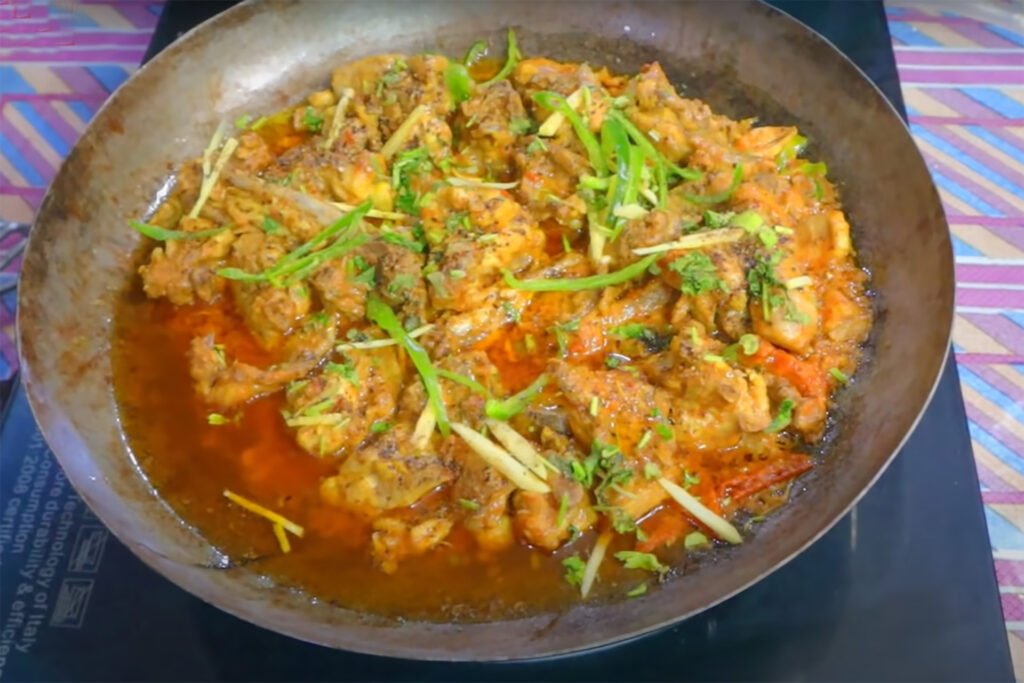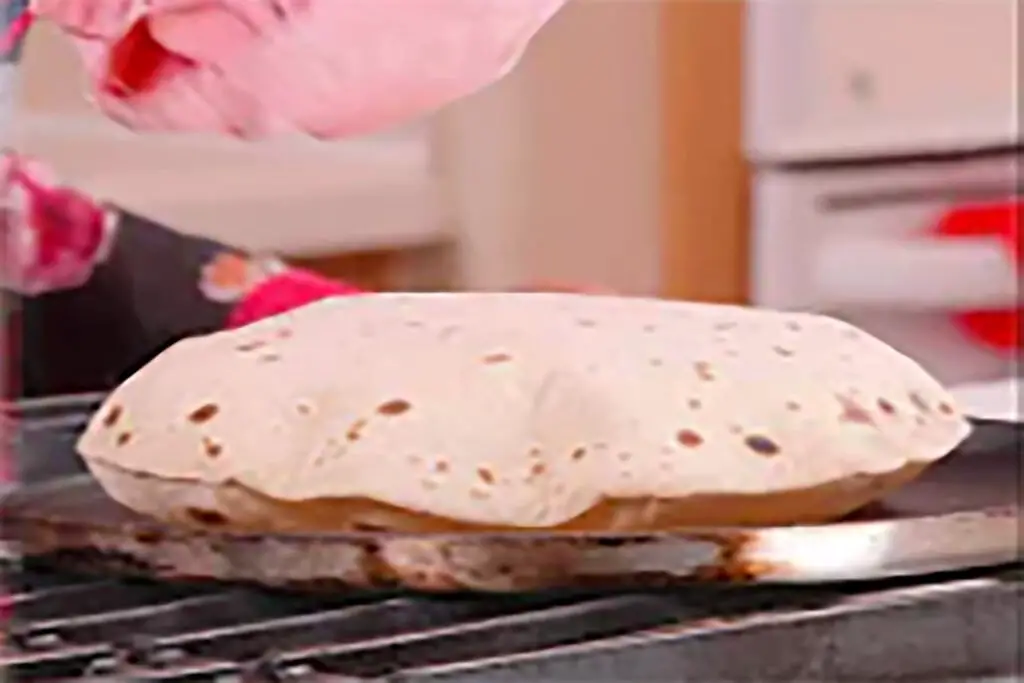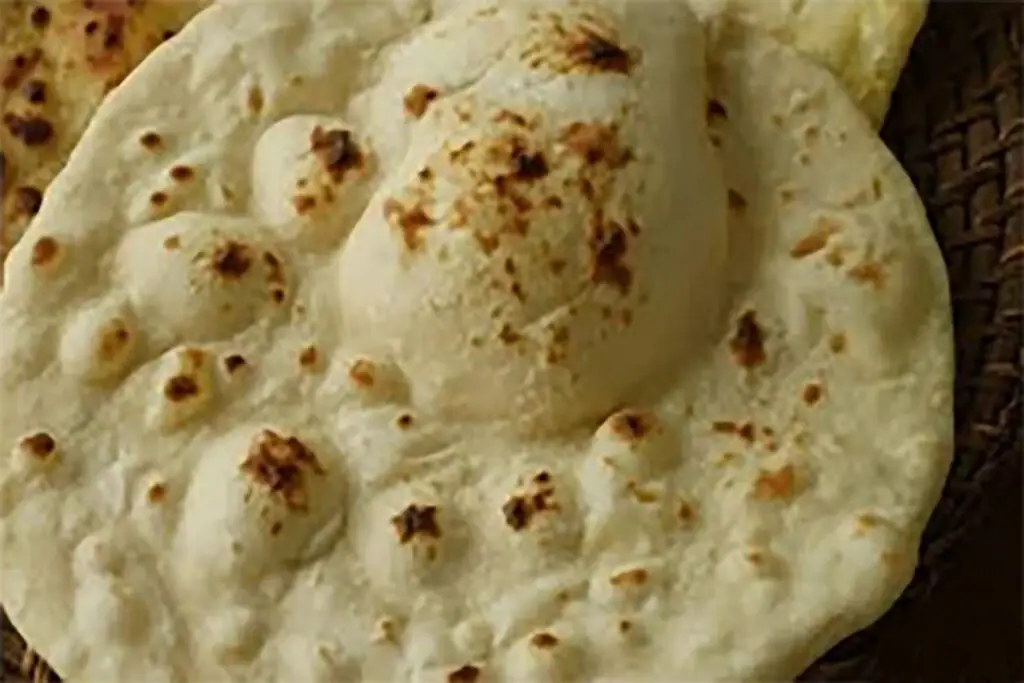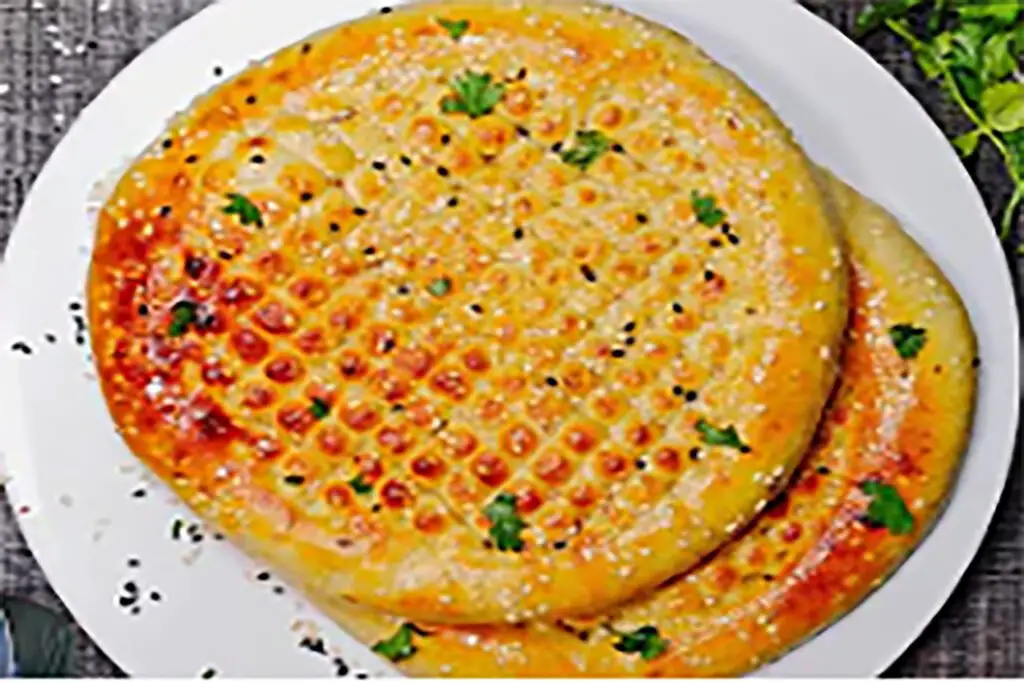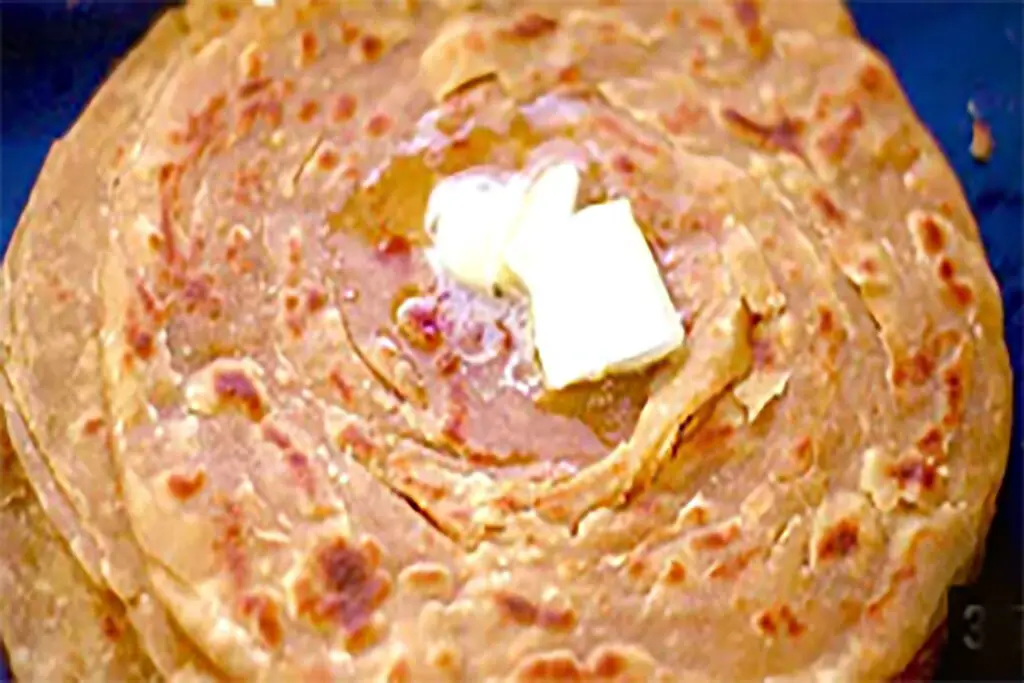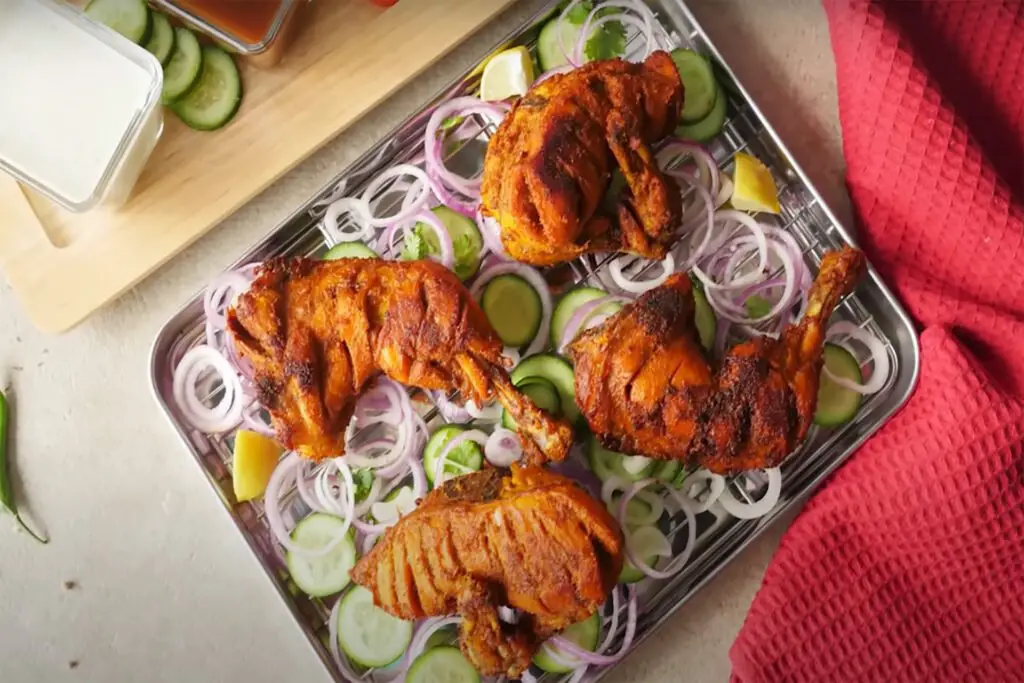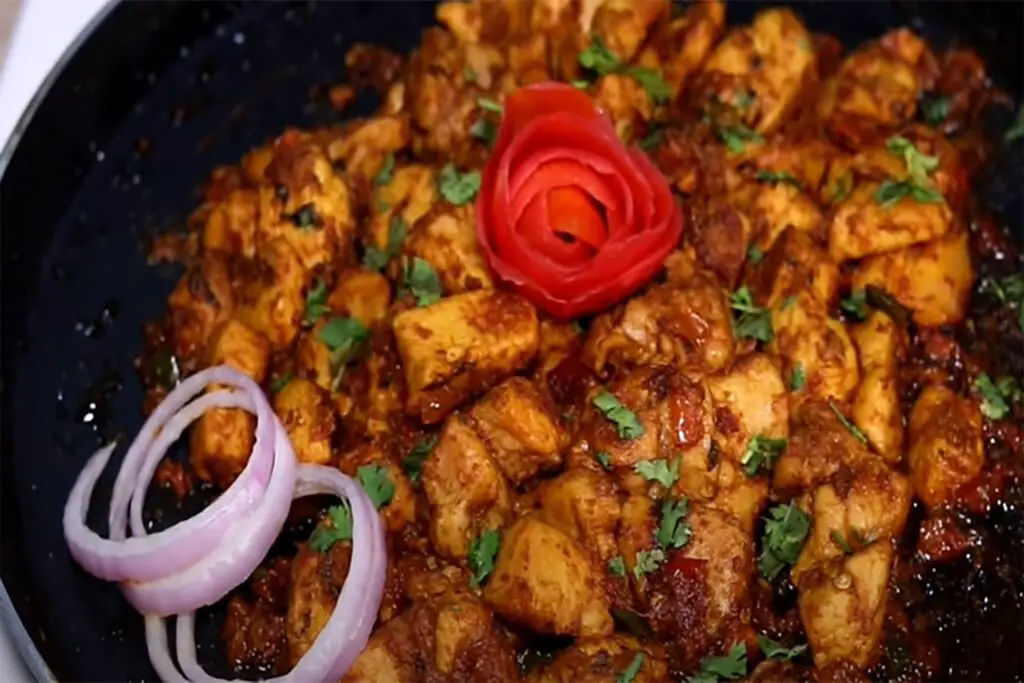In the bustling kitchens of Pakistan, there’s a dish that ignites the senses with its sizzling sound, vibrant colors, and bold flavors. Pakistani Chicken Karahi, also known simply as “Chicken Karahi,” is a culinary masterpiece that encapsulates the nation’s love for aromatic spices, tender chicken, and the unique cooking vessel from which it derives its name. In this article, we’ll embark on a culinary journey through the history, ingredients, preparation, and cultural significance of Pakistani Chicken Karahi, a dish that embodies the heart and soul of Pakistan’s rich culinary tradition.
A Taste of Pakistan’s Culinary Heritage
Pakistani cuisine is celebrated for its diverse flavors and regional influences. Chicken Karahi, however, has transcended regional boundaries to become a beloved dish that unites the nation through its unmistakable taste and cultural significance.
Karahi is named after the pan in which it was originally cooked – a heavy, often cast-iron pan that is similar to a wok but rounder with a flatter bottom. Traditionally, the meat was stewed and fried in this karahi over an open fire.
Chicken karahi is characterized by its rich tomato base and a fragrant finish of green chilies, coriander, and bits of ginger.
Ingredients of Chicken Karahi:
- Chicken
- Black pepper
- Garam Masala
- Yogurt
- Tomatoes
- Onions
- Garlic
- Ghee / Oil
- Spices
- Ginger
- Green chillies
- Corriander
CHICKEN CUTS AND USES OF CHICKEN WITH THE BONE
Traditionally, Karahi is made from sliced whole chicken. One tip for chicken cutlets is to make sure the pieces of chicken are small. This is often called a karahi cut, which is 1 chicken cut into approximately 18 pieces. Basically, try not to use a large chicken (this recipe calls for 2-2.2 lbs) or large pieces.
You can also use boneless chicken, although you will cook the chicken for less time and spend more time sauteing the moisture.
How to Cook Chicken Karahi
- Heat the oil and fry the chopped onion. Fry the onions until they are slightly golden. Then add the garlic, ginger, and green chilies. The onions will color as the aromatics cook.
- Fry the chicken. This technique called “bhunai” roasts the meat and gives it a richer flavor and color. A sprinkling of salt helps layer the flavor here.
- Add tomatoes, spices, and salt. The moisture from all the tomatoes will be enough to cook the chicken while still keeping it moist.
- Cover and cook. Allowing the chicken to simmer slowly, covered, results in tender chicken and well-developed flavors. This also helps the tomatoes to decompose well.
- Uncover and stir-fry on high heat to fry the water. Once the chicken gets shiny, once the ghee/oil starts separating, you are done.
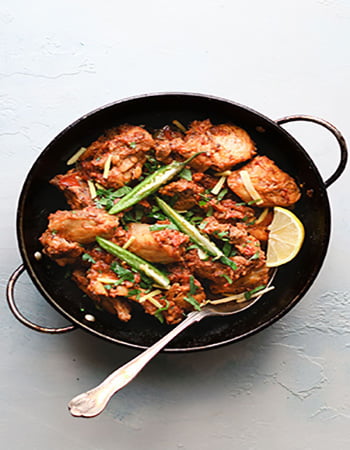
INSTRUCTIONS
- Heat a large bottomed pan to high heat and add the ghee and oil. Once hot, add the onions and fry for 5-6 minutes or until lightly golden. Add the garlic, ginger, and whole green chilies and saute for about a minute.
- Add the chicken and ½ teaspoon salt and sauté for 5 minutes or until the chicken changes color and stops releasing water. Add the tomatoes, coriander, cumin, red chili, and remaining salt and sauté for another minute.
- Reduce the heat to medium, cover, and let the chicken cook for 20 minutes, stirring once in between.
- Uncover and increase heat to high. Fry for 10 minutes to finish cooking the chicken and reduce the excess liquid.* You will notice that the chicken will take on a shiny appearance as the ghee/oil starts to separate.
- Reduce the heat to medium, add the whipped yogurt, and sauté gently for 2-3 minutes. Taste and add salt if necessary. (I usually need an extra 1/8 tsp.) Add freshly ground black pepper and garam masala and stir to combine. Top with green chilies, julienned ginger, and coriander. Serve hot with roti, naan, bread, or rice.
Finish with freshly ground black pepper and garam masala and stir. Garnish with green chilies, chopped ginger, and coriander.
Curries with a lot of sauce (like classic chicken curry) usually go well with both rice and roti, and curries with minimal sauce (like mixed vegetable curry) go well with roti. Since chicken karahi is a ‘dry’ curry, it goes well with Tandoori naan, paratha, roti, or other bread.
Serving Pakistani Chicken Karahi
Pakistani Chicken Karahi is served hot, directly from the wok-like karahi in which it’s cooked. It is often accompanied by naan or paratha (unleavened bread), allowing diners to scoop up the flavorful sauce and tender chicken. Raita (yogurt-based sauce), salad, or pickles may also be served on the side to provide a cooling contrast to the heat of the dish.
Cultural Significance
Pakistani Chicken Karahi is more than just a meal; it’s a cultural symbol of celebration and togetherness in Pakistan. It’s often prepared during weddings, festivals, and special occasions, where sharing a karahi of chicken signifies warmth, hospitality, and the joy of communal dining.
Pakistani Chicken Karahi, with its tender chicken, vibrant spices, and rich sauce, is a true representation of Pakistani cuisine. It’s a dish that bridges the gap between tradition and modernity, offering a taste of the past and a connection to the present. Whether you savor it at a local eatery in Lahore, a family gathering in Karachi, or recreate it in your own kitchen, Pakistani Chicken Karahi is a flavorful journey that leaves an indelible mark—an homage to the diverse and delectable flavors of Pakistan and the joy of sharing a cultural treasure with loved ones.

